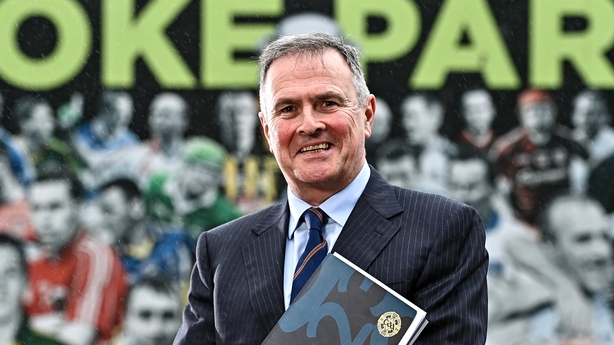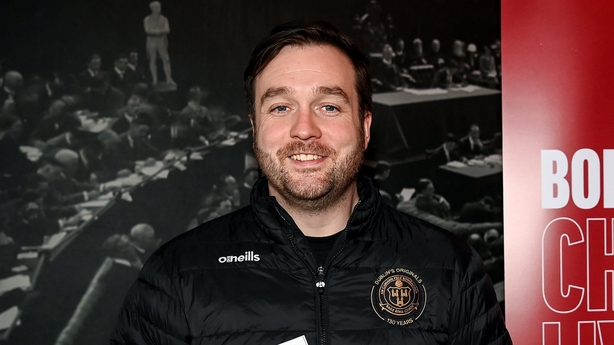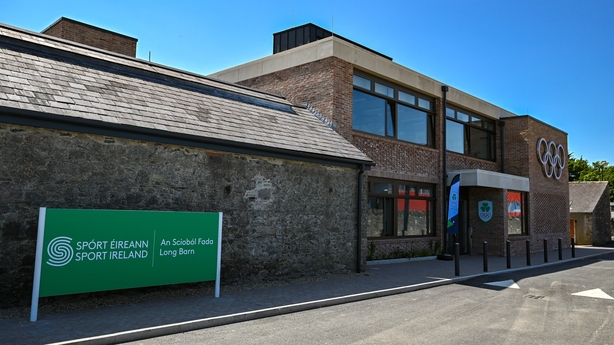COP28 recently agreed that the world needs to transition away from fossil fuels.
For some it was a historic first proper acknowledgement from the United Nations climate change conference of the damage that fossil fuels do to the planet. For others it fell far short of what's needed at a time where climate emergencies have been declared in many countries, including Ireland.
No, you haven't mistakenly clicked on RTÉ's Climate section, which you can find here.
So what does all of this have to do with sport? In 2022 Sport Ireland reported that 1.75 million people participated in sport on a regular basis. This amounted to 43% of the adult population of the state.
For some it might involve putting on a pair of runners and walking down to a local park run. For others, it might be a longer journey to training, a match or even a far away gym.
"Public transport always focuses on commuting," says Gary Marshall, the spokesperson for the Dublin Commuter Coalition.
"But it should include other reasons - one example is facilitating sports events. Whether that's attending big games in stadium. Or young kids travelling to practice.
"At the moment a lot of that travel is parents driving their children around, leading to unnecessary emissions."
In the summer the Environmental Protection Agency confirmed that Transport was the only sector of the economy that had seen a significant increase in greenhouse gas emissions between 2021 and 2022.
At a time when other sectors are doing their bit, transport emissions are heading in the wrong direction. But what might a solution look like?
"Clubs organising private buses, parents carpooling, and improved bike lanes that enable children and young people to cycle to training themselves," says Marshall.
Some solutions will work better in urban areas, and others will work better in more rural areas. And while sports clubs can play their part, there's also the big sporting events which draw a crowd.
To give an idea of what can be achieved, this year's Dutch Formula One Grand Prix banned fans from driving to the event. A town of around 17,000 people saw 300,000 racegoers pass through over the four-day event, with visitors taking public transport and a mixture of walking and cycling to the circuit.
More: Qatar washing green linen in public?
Of course the carbon footprint of the sport, bringing teams and cars all around the world, is the other side of the coin with the season expanding from seven races in the 1950s to 24 next year.
Closer to home, GAA special trains are a common feature of the Irish summer, and have been for a century, with some of the biggest grounds within walking distance of stations.
"Fan travel would be the largest component of our CO2 equivalent," says Peter McKenna, Stadium Director at the GAA's Croke Park.
"We're in the region of 14,000 C02 equivalent emissions [roughly 64% of their total emissions]. You compare that to food, which is 4,000."
The solution for the north Dublin venue is, according to McKenna, for improved public transport that is powered more cleanly.
"Cycling is an important component part but you're not going to come from Kerry to a match on a bicycle," he adds.
"We're taking people from all over the country who are coming to Croke Park. When you're running concerts, they're coming from all over the world.
"It's about a greener public transport. Dublin Bus are doing a fantastic job and Bus Connects is going to really help the city in making commuting by bus, Luas or DART more convenient and more efficient.
"We will start shifting the big CO2 numbers by having a far more efficient public transport system and that's where the investment needs to go.
"I'd argue in favour of the metro and taking cars out of the city. Dublin is a small city."

It's not all about transport either, or what the state can do, with McKenna pointing to plans for a solar farm near Naul. The GAA bought the land to be able to grow their own grass replacement, having previously imported the grass from the UK.
This would come into play after gigs at the stadium, for example.
The site will continue to be used for that purpose, but the association hopes to apply for permission for a solar farm in the new year.
"That'll deliver a 10MW facility for Croke Park," McKenna points out.
"We'll use about 5.5 MW in a year, so that means an additional amount to pass onto the grid.
"70% of all of our menus is made up of produce that is sourced within 50 miles of Croke Park - our 50-mile menu - which is a conscious effort to reduce food transportation, and focus on local suppliers.
"We're going through an extensive LED retrofit on the facility. We're starting a water harvesting programme which will see water coming off the roof used to irrigate the pitch. We need to install a 4,000 cubic metre tank, and that will then supply the pitch.
"Summers are going to get warmer and drought is more likely. Currently we're watering the pitch with potable [ie drinkable] water, which is unsustainable on a series of levels. This will eliminate that."
Ultimately McKenna wants Croke Park to halve their emissions by 2030, and achieve net zero - effectively reducing their emissions by 90% from the base level, according to McKenna - by 2050.
Not too far across Dublin's northside, a club which used to play on Jones' Road became the first soccer club to appoint a climate officer in January 2021 when Seán McCabe took up the role with Bohemians.
While a busy GAA weekend in the summer could easily see over 100,000 people travelling around the country to attend games. The numbers attending League of Ireland games are smaller - probably closer to 25,000 on Friday nights - but much more regular in a 36-round season.
More: Bohemian FC featured in episode one of RTÉ's climate change series 'Heated'
In the past Bohs have offered free admission to Dalymount Park for those that travelled to the Phibsboro venue by bicycle. But the scale of Croke Park, with its 82,500 capacity, versus Dalymount, which can currently accommodate just over 4,000, is completely different.
McCabe says he'd love to see League of Ireland clubs working together to replicate what the GAA is planning with its solar farm but he acknowledges that such a move is more difficult in a league which is edging ever close to being fully professional.
The GAA reaches into every parish in the country and while soccer has a similar broad appeal, the League of Ireland is more about individual pro outfits competing against one another. The grander schemes might be a job for the FAI.
What the clubs can do though, according to McCabe, is get involved in their local community.
"We're at such a laughable point of hopelessness in this crisis that we need a totally different approach," he says.
"Bohs has been a cooperative since 1890 and we're of the thinking that if you applied that same cooperative mindset to climate action it would change the game entirely.
"Instead of talking to our fans about taking shorter showers, we'd prefer to be talking to them about how they might own a solar farm, or a retro fitting business, as part of a cooperative. That could then bring money into our community in Phibsboro and help us address energy poverty in our community by reaching those who are most in need of those actions.
"The objective is to develop the type of culture in Dublin 7 that allows us to own the tangible assets of climate action in the same way that the fans own the club.
"We want to tap into the fans sense of collective identity. You don't go to a football match to be an individual [so] why should we be talking to them as individuals? We should be talking to them as if they're a collective and communicating what a collective, rather than an individual, can do.

"Rather than focusing on recycling, which we do want to improve on, or energy efficient lightbulbs in a stadium that's about to be knocked, we've focused on the community structures that allow the community to take ownership of the climate transition.
"We believe that if we're successful in doing that, and find a model to do that, we'll be able to share it all around Europe and the world very quickly because football clubs exist in every corner of every country.
"We have to recognise that the transition must be built on people having equal access to the solutions, and the only way that can happen is if it's not a for-profit rollout. Those who can afford to pay, and those who can't afford to pay are subsidised so that they can get access."
The hope is that Bohs will eventually open a library of things, where people can borrow tools rather than books, and that will lead to a community owned business where local houses can be retro fitted.
These are just two examples of two sporting neighbours tackling the climate emergency in different ways and trying to reduce their dependency on fossil fuels.
At Sport Ireland's Campus in Blanchardstown, many of Ireland's Olympic athletes will be doing their final preparations on campus, including those involved in boxing, gymnastics, swimming, hockey, badminton and pentathlon.
"This is not only to maximise the world class facilities but to minimise expenses and unnecessary travel," a spokesperson for Sport Ireland confirms.

The retro-fitting of LED lighting and the installation of water fountains has already taken place across campus, but there are not yet concrete plans for following GAA's lead and producing their own energy.
"Sport Ireland has aspirations to increase the proportion of renewable energy on site for both new builds and retro-fits," the spokesperson continues.
"We will also be incorporating a wide range of lower carbon technologies including Solar PV, Heats Pumps and the potential utilisation of a proposed District Heat Network in the Blanchardstown area."
Travel around the large campus can be carried out on rental bikes, which are free to use for all employees on site, while work is ongoing that will see 50% of the water in the Olympic-sized swimming pool coming from wells.
While progress is being made across varying sporting bodies, it's clear that there's still plenty that can be done to address this generation's biggest challenge.


